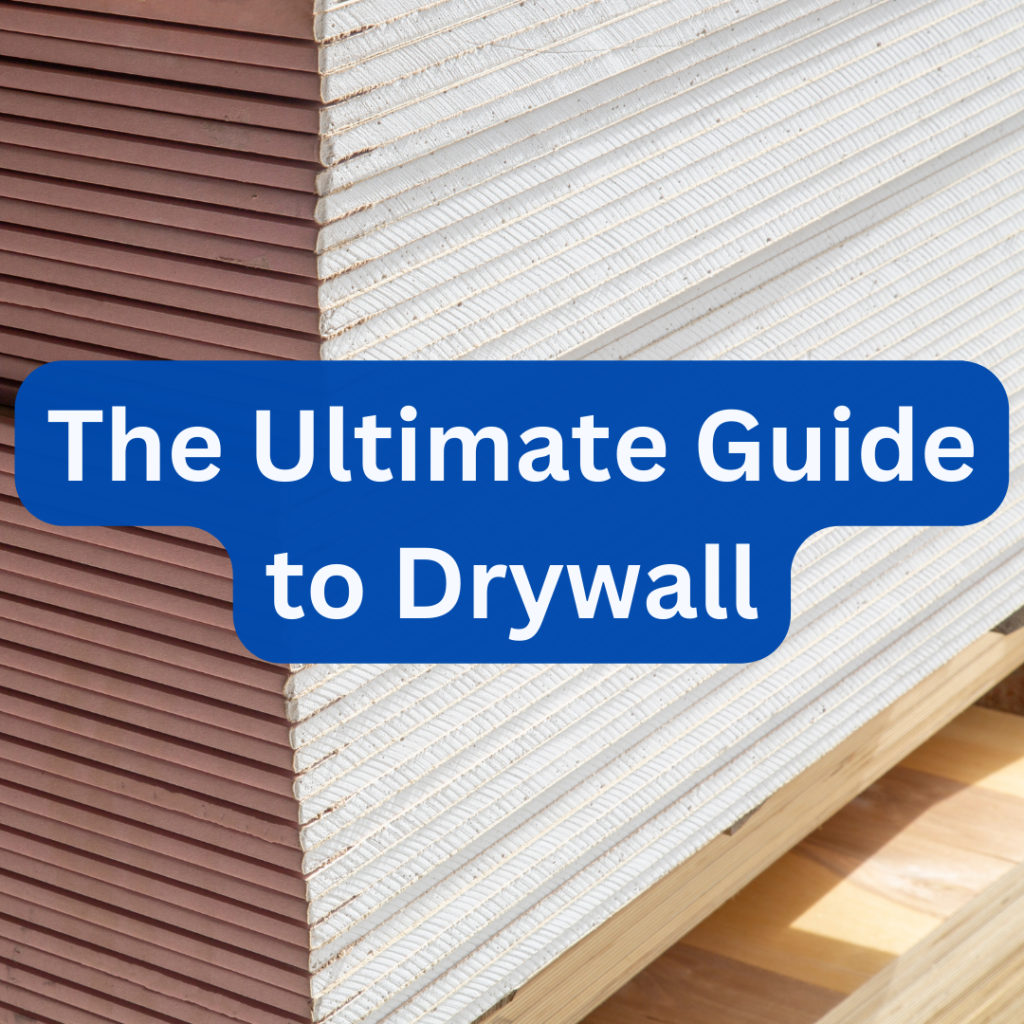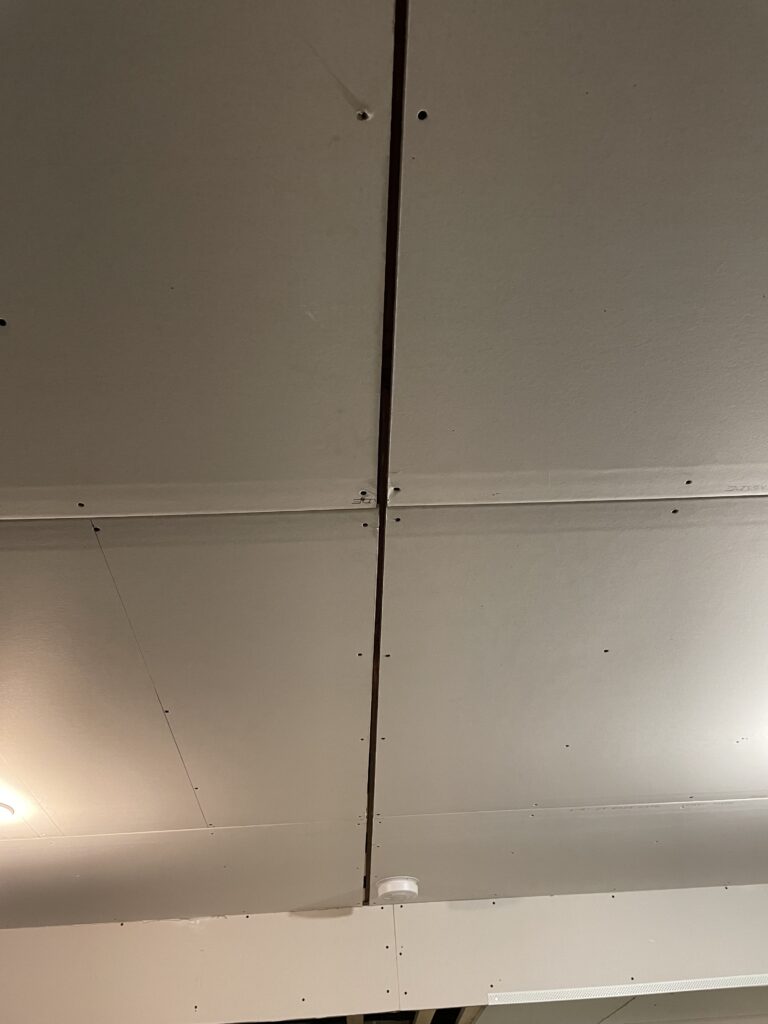The Ultimate Guide to Drywall: Everything You Need to Know
What is Drywall?
Drywall, also known as plasterboard or gypsum board, is a construction material commonly used for the finishing of interior walls and ceilings. It consists of a thin layer of gypsum sandwiched between two layers of paper or fiberglass. Drywall is an inexpensive and efficient way to create smooth, finished surfaces in a home or commercial building.

Types of Drywall
There are several types of drywall available on the market, each designed for specific purposes. Some common types include:
- Regular drywall: This is the most basic type of drywall, suitable for most standard interior wall and ceiling applications.
- Fire-resistant drywall: This type of drywall is treated with special additives that make it resistant to fire. It is often used in kitchens, laundry rooms, and other areas where there is a higher risk of fire.
- Moisture-resistant drywall: As the name suggests, moisture-resistant drywall is designed to withstand exposure to moisture and humidity. It is often used in bathrooms, basements, and other damp areas.
- Soundproof drywall: This type of drywall is designed to reduce the transmission of sound through walls and ceilings. It is often used in media rooms, home theaters, and other areas where noise reduction is a priority.
Benefits of Using Drywall
There are several benefits to using drywall as a finishing material:
- Ease of installation: Drywall is relatively easy to install, especially compared to other types of wall finishes such as plaster or brick. With the right tools and some basic knowledge, it is possible for a DIY enthusiast to install drywall in their home.
- Inexpensive: Drywall is a cost-effective solution for finishing the interior of a building. It is generally cheaper than other materials such as plaster or brick, and it can be easily repaired or replaced if damaged.
- Versatility: Drywall can be painted or finished with wallpaper or other decorative treatments to suit the style and design of a space. It is also available in a range of sizes and thicknesses to accommodate different types of applications.
- Durability: With proper installation and maintenance, drywall can last for many years. It is a strong and reliable material that can withstand the wear and tear of everyday life.
Drywall Installation
Tools and Materials Needed
Installing drywall requires a few basic tools and materials, including:
- Drywall sheets: These come in standard sizes such as 4×8 feet, 4×10 feet, or 4×12 feet, and vary in thickness from 1/4 inch to 5/8 inch. Choose the appropriate size and thickness for your project based on the framing of your walls and ceilings and the desired level of insulation.
- Screws: Drywall screws are used to attach the sheets to the framing. They are available in different lengths to accommodate different thicknesses of drywall.
- Measuring tape: A measuring tape is used to measure the length and width of the drywall sheets and the walls and ceilings to which they will be attached.
- Utility knife: A utility knife is used to cut the paper or fiberglass backing around the edges of the drywall sheets. It can also be used to trim off excess drywall tape or compound.
- Drywall trowel/knife: A drywall trowel is a flat, metal tool used to apply compound to the seams and joints of the drywall sheets.
- Drywall compound: Also known as joint compound, this is a thick, paste-like material used to smooth out the seams and joints between drywall sheets and to cover any screws or imperfections.
- Drywall tape: Drywall tape is a thin, paper-like material used to reinforce the seams between drywall sheets. It is applied over the compound and then covered with additional compound to create a seamless finish.
Preparing the Surface
Before hanging the drywall, it is important to prepare the surface of the walls and ceilings. This may involve repairing any damage to the framing, filling any gaps or holes, and ensuring that the surface is smooth and even.
Hanging the Drywall
Once the surface is prepared, it is time to start hanging the drywall. The process typically involves the following steps:
- Measure and cut the drywall sheets to fit the length and width of the walls or ceiling. Use a drywall saw or utility knife to make precise cuts around electrical outlets, pipes, and other obstructions.
- Lift the drywall sheets into place and position them against the framing. Use a level to ensure that they are straight.
- Secure the drywall sheets to the framing using screws. Space the screws about 8 inches apart along the edges and 12 inches apart in the field (the middle of the sheet).
- Continue hanging the drywall sheets until the entire wall or ceiling is covered.
Cutting and Shaping the Edges
Once all the drywall sheets are in place, it is important to cut and shape the edges to fit around corners and obstructions. This can be done using a drywall saw or utility knife.
Seaming and Jointing
After the drywall sheets are in place, it is time to cover the seams and joints between them. This is typically done using drywall tape and compound.
- Apply a thin layer of compound over the seams and joints using a drywall trowel or taping knife.
- Place a strip of drywall tape over the compound and smooth it down with the trowel or knife.
- Apply a second layer of compound over the tape and smooth it out until the tape is completely covered.
- Allow the compound to dry completely.
- Sand the compound smooth using a fine-grit sandpaper or a sanding block.
Finishing and Painting
After the seams and joints are covered and sanded smooth, the drywall is ready for its final finish. This may involve painting the walls or ceiling, applying wallpaper or other wallcoverings, or using other decorative techniques such as texturing or murals.
If painting, be sure to prime the surface first to ensure that the paint adheres properly. Then, apply the paint in thin, even coats, using a paintbrush or roller. Allow each coat to dry completely before applying the next one.
If using wallpaper or other wallcoverings, be sure to follow the manufacturer’s instructions for installation. This may involve applying a special adhesive or sizing solution to the surface before hanging the wallpaper.
Decorative techniques such as texturing or murals can add visual interest and depth to a room. These techniques may require special tools and techniques, such as stencils or sponges, and may take some practice to master. Be sure to research and practice these techniques before attempting them on a large scale.
Drywall Repair
Common Drywall Problems
Even with proper installation and maintenance, drywall can sometimes become damaged. Some common problems include:
- Cracks: Cracks can occur in drywall due to settling, expansion, contraction, or other stress on the walls or ceilings. Hairline Cracks?
- Holes: Holes can be caused by accidental damage, such as a misplaced nail or screw, or by the removal of fixtures or decorations.
- Dents: Dents can occur when heavy objects are dropped or when walls or ceilings are bumped or impacted.
Repairing Cracks and Holes
Small cracks and holes in drywall can usually be repaired using compound and sanding. Here’s how:
- Clean the area around the crack or hole to remove any debris or dust.
- Apply a small amount of compound to the area using a putty knife or drywall trowel.
- Smooth the compound out until it is flush with the surface of the drywall.
- Allow the compound to dry completely.
- Sand the area smoothly using fine-grit sandpaper.
- If necessary, apply additional layers of compound and sand until the repair is seamless and smooth.
- Finish the repair by painting or applying wallpaper over the area.
Replacing Damaged Drywall
In more severe cases, it may be necessary to cut out the damaged section of drywall and replace it with a new piece. Here’s how:
- Measure and cut out the damaged section of drywall using a drywall saw or utility knife.
- Cut a piece of new drywall to fit the size and shape of the hole.
- Secure the new piece of drywall to the framing using screws.
- Cover the seams and joints between the new drywall and the existing drywall using drywall tape and compound, as described above.
- Sand the repair smooth and finish as desired.
Tips for a Smooth Finish
To achieve a smooth, seamless finish when working with drywall, it is important to follow a few basic tips:
- Use a drywall trowel or putty knife to apply the compound in thin, even layers.
- Sand the compound smooth after it has dried.
- Use fine-grit sandpaper for a smoother finish.
- Wipe away any excess dust or debris before painting or finishing the surface.
Decorative Drywall Techniques
Textured Finishes
Textured finishes are a popular way to add visual interest and depth to drywall surfaces. There are many different techniques that can be used to create a variety of textures, including sponging, ragging, and stippling. These techniques involve using specialized tools such as sponges, rags, or brushes to apply compound or other materials in a pattern or design onto the drywall surface.
Wallpaper and Wallcoverings
Wallpaper and wallcoverings are other options for adding decorative touches to drywall surfaces. There are many different types of wallpaper available, including traditional paper-based wallpaper, vinyl wallpaper, and fabric-based wallpaper. Wallcoverings can be used to create a range of looks, from classic and traditional to modern and contemporary.
Murals and Stencils
Murals and stencils are a creative way to add artistic flair to drywall surfaces. Murals can be painted directly onto the drywall using a variety of techniques and tools, such as brushes, rollers, and stencils. Stencils can be used to create repeating patterns or designs on walls or ceilings.
Accent Walls and Ceilings
Accent walls and ceilings are a popular trend in home design. They involve painting or finishing one wall or ceiling in a different color or texture than the rest of the room, creating a visual focal point. Accent walls and ceilings can be created using a variety of techniques and materials, including paint, wallpaper, and textured finishes.
Conclusion
Drywall is a versatile and cost-effective solution for finishing the interior of a home or commercial building. It is relatively easy to install and repair, and it can be painted or finished with a wide range of decorative treatments. Whether you are a seasoned professional or a DIY enthusiast, working with drywall can be a rewarding and satisfying experience.
Key Takeaways
- Drywall is a construction material used for finishing interior walls and ceilings. It consists of a thin layer of gypsum sandwiched between two layers of paper or fiberglass.
- There are several types of drywall available, including regular, fire-resistant, moisture-resistant, and soundproof. Each type is designed for specific purposes.
- Drywall installation requires basic tools and materials, such as screws, a drywall saw, and drywall compound. The process involves hanging the sheets, cutting and shaping the edges, seaming and jointing, and finishing and painting.
- Drywall can become damaged due to cracks, holes, or dents. Small repairs can be made using compound and sanding, while larger damages may require replacing the damaged section with a new piece of drywall.
- Decorative techniques such as textured finishes, wallpaper and wallcoverings, murals and stencils, and accent walls and ceilings can add visual interest and depth to drywall surfaces.





